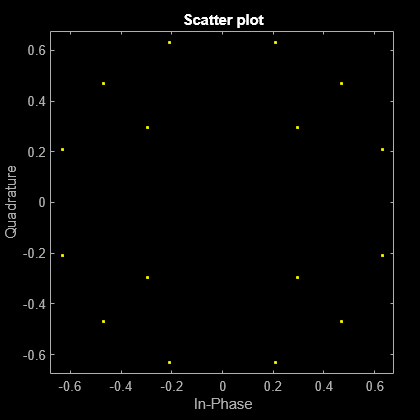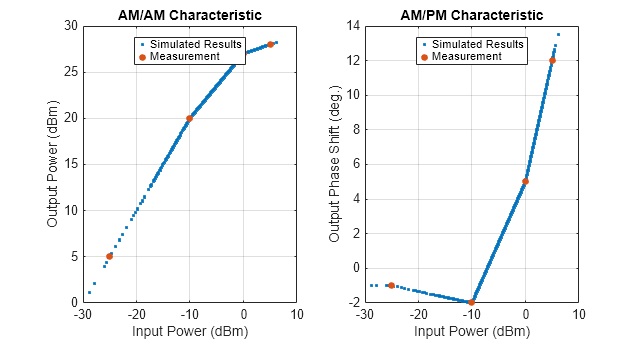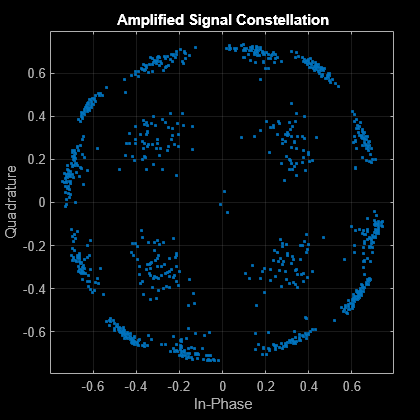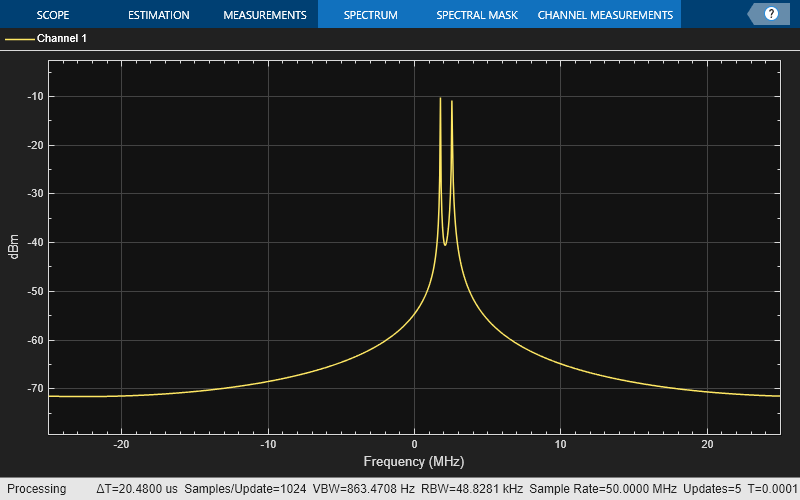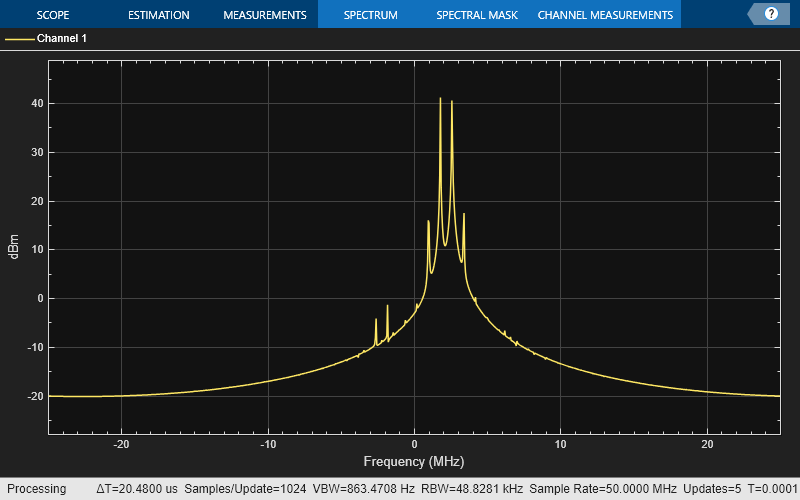rf.Amplifier
Model nonlinear amplifiers using cubic polynomial, AM/AM-AM/PM, modified Rapp, or Saleh representations
Since R2024b
Description
Use the rf.Amplifier
System object™ to create an idealized amplifier for command line simulation. The
rf.Amplifier
System object is a complex baseband model of an idealized amplifier with thermal noise. This
System object provides four nonlinearity models and three options to specify noise
representation. The four nonlinearity models are cubic polynomial, AM/AM-AM/PM, modified Rapp,
and Saleh.
To create a complex baseband model of amplifier with noise and nonlinearities:
Create the
rf.Amplifierobject and set its properties.Call the object with arguments, as if it were a function.
To learn more about how System objects work, see What Are System Objects?
Creation
Description
rfamp = rf.Amplifier
rfamp = rf.Amplifier(Name=Value)rf.Amplifier object using one or more name-value
arguments. For example, rfamp = rf.Amplifier(Model='ampm') creates an
idealized amplifier element designed using AM/AM—AM/PM data. Properties you do not specify
retain their default values.
Properties
Usage
Syntax
Description
Input Arguments
Output
Object Functions
To use an object function, specify the
System object as the first input argument. For
example, to release system resources of a System object named obj, use
this syntax:
release(obj)
Examples
References
[1] Razavi, Behzad. “Basic Concepts “ in RF Microelectronics, 2nd edition, Prentice Hall, 2012.
[2] Rapp, C., “Effects of HPA-Nonlinearity on a 4-DPSK/OFDM-Signal for a Digital Sound Broadcasting System.” Proceedings of the Second European Conference on Satellite Communications, Liege, Belgium, Oct. 22-24, 1991, pp. 179-184.
[3] Saleh, A.A.M., “Frequency-independent and frequency-dependent nonlinear models of TWT amplifiers.” IEEE Trans. Communications, vol. COM-29, pp.1715-1720, November 1981.
[4] IEEE 802.11-09/0296r16. “TGad Evaluation Methodology.“ Institute of Electrical and Electronics Engineers.https://www.ieee.org/
[5] Kundert, Ken.“ Accurate and Rapid Measurement of IP2 and IP3,“ The Designer Guide Community, May 22, 2002.
Version History
Introduced in R2024b
